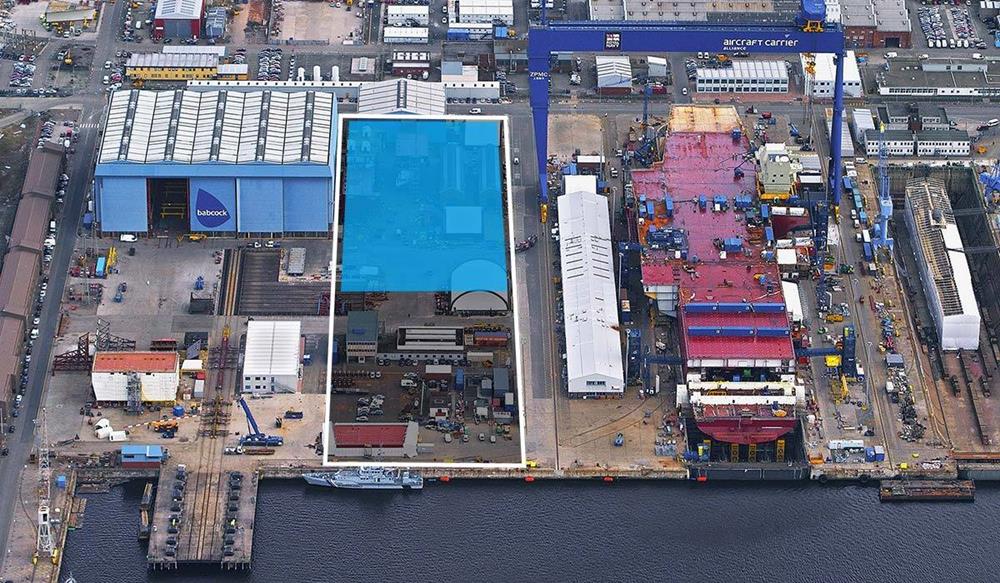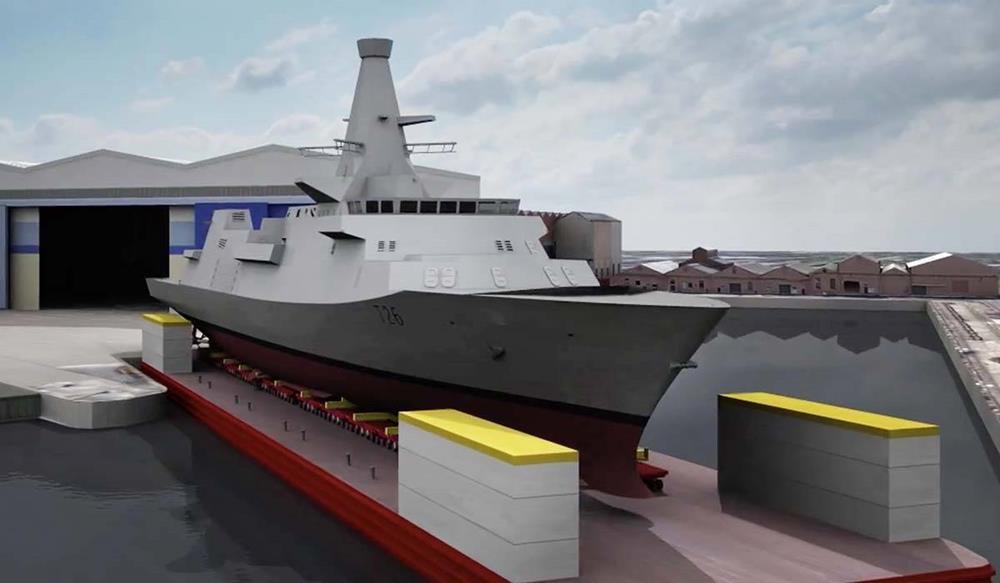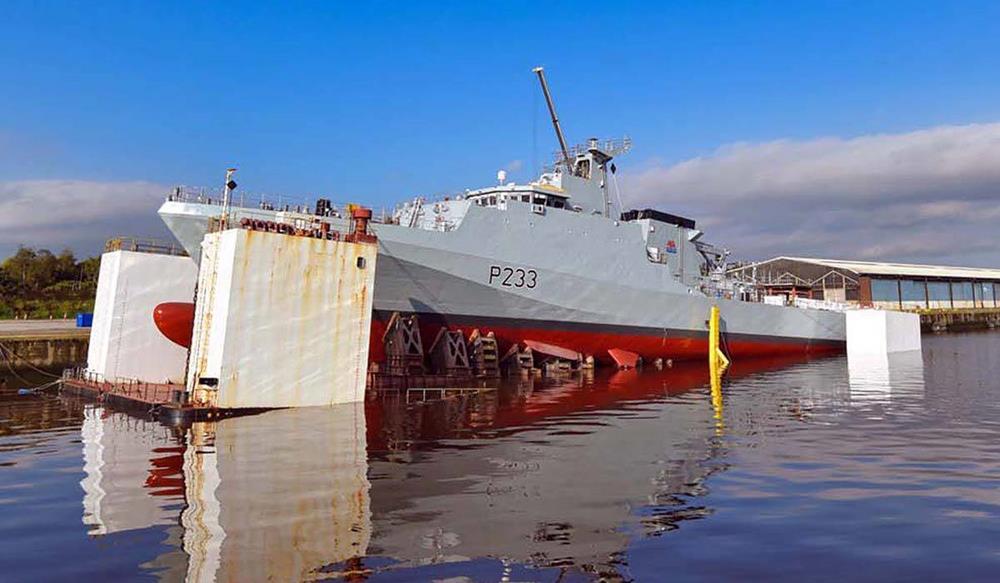Rosyth Dockyard 23 – Future developments – the Frigate Factory
| < 22 – Post WW2 modifications | Δ Index |
 The frigate factory
The frigate factory
In 2021, Babcock is constructing a new module hall to assemble five Type 31 frigates for the Royal Navy at Rosyth.
The building will occupy land between the Syncrolift hall (opened in 1980 and used primarily for minehunter refits), and Number 1 Dry Dock where both QEC aircraft carriers were assembled.
The basic building design is relatively simple, a large hall where two Type 31 frigates can be assembled side by side. This will be an impressive structure measuring 160m in length, 60m wide and 40m high.
The main internal feature will be two rail-mounted gantry cranes each with two hooks able to provide lifting cover to the full internal floor area of the hall. The cranes will be used to lift the modules into position as the ships are assembled. Both the north and south façade of the building will have two vertical-lift ‘megadoors’. Each door is 24m wide by 30m high with a demountable column between, creating a 48m-wide opening. The building is designed with flexibility for future shipbuilding operations beyond the conclusion of Type 31 construction.
Once assembled, the ships are lifted off the floor of the hall in their cradles using self-propelled modular trailers (SPMT) and rolled out onto a hardstanding area where masts and additional fittings are then added by crane.
When the hull is ready to be launched, a specialist submergible barge will be brought into the basin and aligned with the dockside. SMPTs then slowly move the ship onto the barge. The barge will then be moved out of the basin and into the deeper water of the river before slowly submerging, allowing the ship to float off.
This method is now common shipbuilding practice and reduces stress on the hull, complications of assembly on an incline and the risk of damage during a traditional dynamic launch. (HMS Duncan was the last RN vessel launched down a slipway in 2010.)
 Aerial view of the Rosyth yard taken during the assembly of HMS Queen Elizabeth in 2014. The area that will be redeveloped is outlined in white and the position of new module hall shown in blue
Aerial view of the Rosyth yard taken during the assembly of HMS Queen Elizabeth in 2014. The area that will be redeveloped is outlined in white and the position of new module hall shown in blue
 The view from the north showing where the module hall will be sited and the position of the staff welfare facility behind the Syncrolift offices.
The view from the north showing where the module hall will be sited and the position of the staff welfare facility behind the Syncrolift offices.
 GGI showing how a frigate will be rolled on to the launch barge prior to float-off.
GGI showing how a frigate will be rolled on to the launch barge prior to float-off.
 HMS Tamar being floated off her launch barge into the Clyde. By careful flooding of the ballast tanks in the barge, it can be made to submerge allowing the ship to float free.
HMS Tamar being floated off her launch barge into the Clyde. By careful flooding of the ballast tanks in the barge, it can be made to submerge allowing the ship to float free.
Some existing buildings will have to be demolished and vertical piles put into the ground across the site to provide a foundation able to cope with heavy loads. Surveys have confirmed the area is not threatened by flooding, being 4.8m above mean sea level and well protected from tidal surge and wave action by the dock basin. A solar farm or ground-heat recovery plant is also planned to provide at least 50% of the power needs of the site.
| < 22 – Post WW2 modifications | Δ Index |